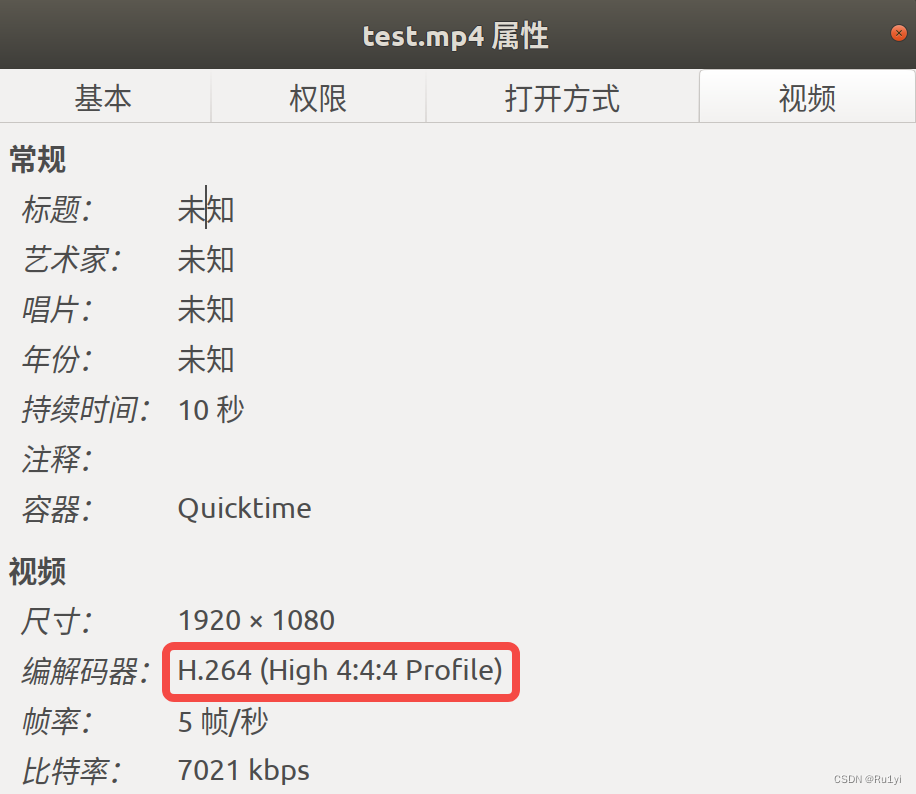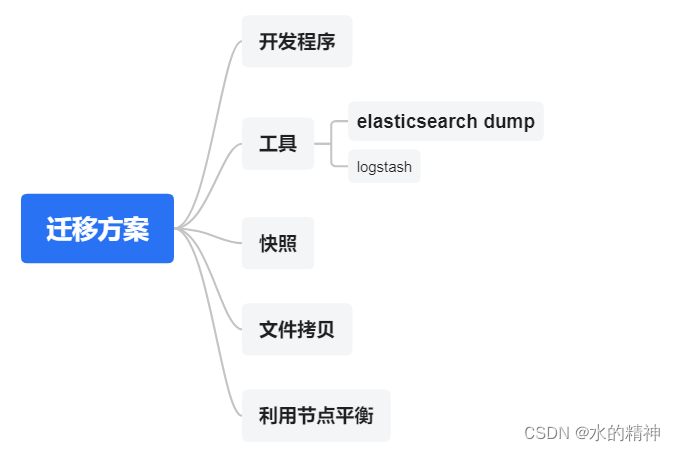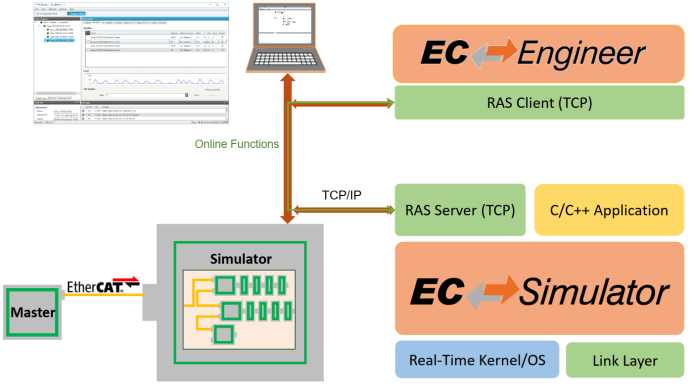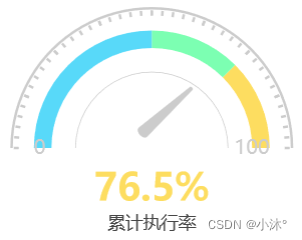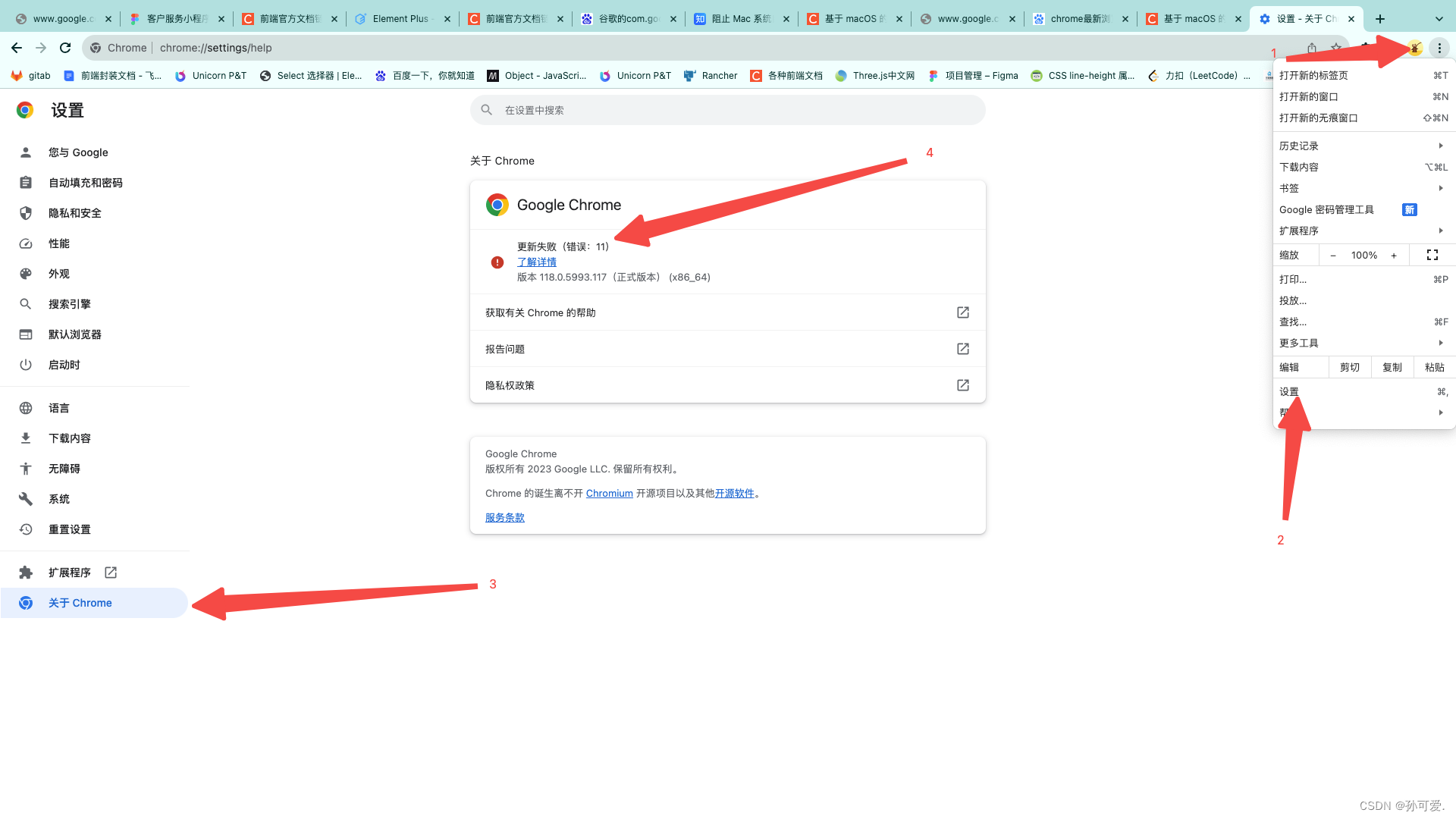1. 写在前面
今天整理一篇后端框架的笔记, fastapi框架是比较主流的后端异步web框架,关键是python语言可以写,正好公司最近安排了一些后端服务的活, 所以就看了一个fastapi框架的入门课程(链接在底部),完成任务,这次想把学习的笔记整理下,方便以后回看回练。
这次笔记算虽然是fastapi的入门,但学习完了之后, 用fastapi框级上手开发公司里面的项目应该是没问题的,这个我亲测过, 并且可以比较舒服的学习大佬的后端代码了, 至于具体细节,边学边补就好, 但和同事大佬能交流的前提,就是得知道一些基础知识, 所以这篇文章就抛砖引玉下, 把fastapi这块的基础知识补一下。
大纲如下:
- FastAPI框架初识
- Pydantic基础
- 请求参数和验证
- 响应处理与FastAPI配置
- FastAPI依赖注入系统
- FastAPI的安全认证与授权
- FastAPI数据库操作与多应用目录设计
- 中间件、CORS、后台任务与测试用例
ok, let’s go!
2. FastAPI框架初识
2.1 Why FastAPI
这里主要是为什么要用FastAPI框架呢? 这哥们有几大特点:
-
性能优越 — 异步的web框架(同步和异步)
- 同步和异步是编写并发程序的两种方式。
- 同步:指服务器使用底层操作系统的线程和进程实现并发, 同时来多个请求之后, 由一个转发节点,把请求分到多个server worker上去处理, 相当于开启了多个进程或线程处理这些事情。这时候,每个worker都是单独处理一个请求,直到把请求搞定再处理下一个, 如果起的worker数小于请求数, 就会有请求等待。 Falsk和Django框架就是这种方式。
- 异步:服务器运行在单个进程中,多个请求打过来之后, 服务器通过循环去控制哪个请求得到处理,如果当前请求需要等待一个外部事件比如读写数据库这种, 那么服务器不会等他写完再处理下一个请求,而是直接去下一个请求,等上一个数据库的操作完成了,再回来执行它, 这样就没有等待或阻塞了。 典型的FastAPI框架,这种方式处理请求的性能稍好。
- 同步和异步是编写并发程序的两种方式。
-
开发效率高
-
减少越40%的人为bug(错误处理方面的体验,错误类型,错误原因等)
-
直观
-
易学易用
-
精简代码,代码重复率更低
-
自带API交互文档,开发成果随时交付
-
API开发标准化
2.2 Starlette, Pydantic和FastAPI的关系
Python的类型提示: type hints, 可以帮助我们知道函数里面的每个参数是什么类型,在写代码的时候减少出错。
- Pydantic是一个基于python类型提示来定义数据验证,序列化和文档(使用json模式)的库。前端与后端交互传递数据的时候,可以通过Pydantic来验证传的数据是否符合规范, 返回给前端的时候也需要按照规范返回。
Starlette是一种轻量级的ASGI框架/工具包(异步web框架),构建高性能Asyncio服务的理想选择。
FastAPI是引入了Pydantic和Starlette库,然后引入了一些新的内容

ASGI服务的Uvicorn和Hypercorn介绍:

- ASGI和WSGI是两种不同的web规范, 是基于web服务器(ngix, apache)和python应用(Django,Flask)之间的一种约定,不是可以安装的东西
- ASGI下面:
- Uvicorn, Hypercorn, Daphne可以pip直接安装的包,属于ASGI服务,类似于apache服务,异步的web服务框架部署时需要的服务,Uvicorn用的最多
- WSGI下面: uWSGI, Gunicorn,部署python同步web应用的
3. Pydantic基础
基本介绍:
-
使用Python的类型注解来进行数据校验和settings管理
-
Pydantic可以在代码运行时提供类型提示,数据校验失败时提供友好的错误提示
-
定义数据应该如何在纯规范的Python代码中保存,并用Pydantic验证它
这个东西定义的我感觉是请求体,里面的每个参数,我们可以提前指定好类型, 以及可以加一些方法进行校验等,来保证数据不出错。
基本用法:
class User(BaseModel):id: int # 必填字段name: str = "John Snow" # 有默认值,选填字段signup_ts: Optional[datetime] = None # 选填字段friends: List[int] = [] # 列表中元素是int类型或者可以直接转换成int类型external_data = {"id": 123,"signup_ts": "2023-08-03 15:55","friends": [1, 2, "3"]
}print("\033[31m1. --- Pydantic的基本用法。Pycharm可以安装Pydantic插件 ---\033[0m")# python 解包传给上面的类
user = User(**external_data)
print(user.id, user.friends, user.signup_ts) # 实例化之后调用属性
print(user.dict())print("\033[31m2. --- 校验失败处理 ---\033[0m")
try:User(id=1, signup_ts=datetime.today(), friends=[1, 2, "not number"])
except ValidationError as e:print(e.json())print("\033[31m3. --- 模型类的的属性和方法 ---\033[0m")
# 数据转成字典,json, copy
print(user.dict())
print(user.json())
print(user.copy()) # 浅拷贝
# 下面解析数据 类名字要注意
print(User.parse_obj(obj=external_data))
print(User.parse_raw('{"id": "123", "signup_ts": "2020-12-22 12:22", "friends": [1, 2, "3"]}'))path = Path('pydantic_tutorial.json')
path.write_text('{"id": "123", "signup_ts": "2020-12-22 12:22", "friends": [1, 2, "3"]}')
print(User.parse_file(path))# schema的方法
print(user.schema())
print(user.schema_json())user_data = {"id": "error", "signup_ts": "2020-12-22 12 22", "friends": [1, 2, 3]} # id是字符串 是错误的
print(User.construct(**user_data)) # 不检验数据直接创建模型类,不建议在construct方法中传入未经验证的数据# 查看类的所有字段
print(User.__fields__.keys()) # 定义模型类的时候,所有字段都注明类型,字段顺序就不会乱
递归模型: 这个就是一个模型类里面用了另一个模型类
print("\033[31m4. --- 递归模型 ---\033[0m")
class Sound(BaseModel):sound: str
class Dog(BaseModel):birthday: dateweight: float = Optional[None]sound: List[Sound] # 不同的狗有不同的叫声。递归模型(Recursive Models)就是指一个嵌套一个dogs = Dog(birthday=date.today(), weight=6.66, sound=[Sound.parse_obj(obj={"sound": "wang wang ~"}),Sound.parse_obj(obj={"sound": "ying ying ~"})])
print(dogs.dict())
创建符合ORM类的实例对象
- ORM: Object-Relational Mapping,把关系数据库的表结构映射到对象上
- ORM就是把数据库表的行与相应的对象建立关联,互相转换
- ORM框架的作用就是把数据库表的一行记录与一个对象互相做自动转换,在Python中,最有名的ORM框架是SQLAlchemy。
示例:
print("\033[31m5. --- ORM模型:从类实例创建符合ORM对象的模型 ---\033[0m")# 定义一张数据表的模型类,每个对象,与数据库中的表的一条记录关联
Base = declarative_base()
class CompanyOrm(Base):__tablename__ = 'companies'id = Column(Integer, primary_key=True, nullable=False)public_key = Column(String(20), index=True, nullable=False) # index为True, 自动建立索引,就不用单独再用KEY建立索引了name = Column(String(63), unique=True)domains = Column(ARRAY(String(255)))# 定义pydantic模型类定义的数据规范, 与数据表模型类的对象一一对应,限制其数据格式
class CompanyMode(BaseModel):id: intpublic_key: constr(max_length=20)name: constr(max_length=63)domains: List[constr(max_length=255)]class Config:orm_mode = True # 这个表示我们建立的数据格式和模型类定义的, 方便后面调用一个from_orm的方法# 数据表的模型类
co_orm = CompanyOrm(id=123,public_key='foobar',name='Testing',domains=['example.com', 'foobar.com'],
)# pydantic模型类定义的数据格式的规范 创建了一个pydantic模型,符合orm对象
print(CompanyMode.from_orm(co_orm))print("\033[31m6. --- Pydantic支撑的字段类型 ---\033[0m") # 官方文档:https://pydantic-docs.helpmanual.io/usage/types/
4. 请求参数和验证
4.1 hello world接口给后端传递
app = FastAPI()class CityInfo(BaseModel):province: strcountry: stris_affected: Optional[bool] = None # 与bool的区别是可以不传,默认是null@app.get('/')
async def hello_world():return {'hello': 'world'}# @app.get('/city/{city}?q=xx') fastapi里面两个/ /之间的叫做路径参数, ?后面的叫查询参数
@app.get('/city/{city}')
async def result(city: str, query_string: Optional[str] = None):return {'city': city, 'query_string': query_string}@app.put('/city/{city}')
async def result(city: str, city_info: CityInfo):return {'city': city, 'country': city_info.country, 'is_affected': city_info.is_affected}# 启动命令:uvicorn hello_world:app --reload# SwargUI文档: url/docs 可以打开,理解会显示各个接口,可以在上面进行相关的参数调试
4.2 路经参数解析/验证
第一个点,一个大的应用里面会包含很多子应用, 主程序里面是FastAPI类进行实例化,子应用是通过接口路由APPRouter的方式进行实例化,然后从主程序里面进行导入。
import uvicorn
from fastapi import FastAPI# tutorial 下面的每个py文件相当于一个应用,但是不能每一个都给它建立一个fastapi应用,所以这里通过接口路由的方式去实例化应用, 相当于子应用
# 之所以这里能直接导入app03, 是因为在tutorial的__init__文件中导入app03了,就不用from tutorial.chapter03 import app03了
from tutorial import app03, app04, app05# 示例化一个fastapi应用
app = FastAPI()# 把接口路由的子应用接到主应用里面来
# 这个前缀就是请求的url, tags表示应用的标题, api文档里面的接口上面都有标题名
app.include_router(app03, prefix='/chapter03', tags=['第三章 请求参数和验证'])
app.include_router(app04, prefix='/chapter04', tags=['第四章 响应处理和FastAPI配置'])
app.include_router(app05, prefix='/chapter05', tags=['第五章 FastAPI的依赖注入系统'])# 这里也可以只设置应用入口, 具体的prefix, 以及tags在相应的应用里面设置, 这个在实际开发中,会降低主应用与子应用的耦合性
# 主应用里面只管导入子应用, 不管子应用的路径以及tags
app.include_router(app03)if __name__ == "__main__":# 等价于之前的命令行启动:uvicorn run:app --reloaduvicorn.run("run:app", host='0.0.0.0', port=8000, reload=True, debug=True, workers=1)
下面在app03里面看路径参数和数据的解析验证
"""Path Parameters and Number Validations 路径参数和数字验证"""
# GET和POST的区别: 最直观的区别就是GET把参数包含在URL中,POST通过request body传递参数
@app03.get('/path/parameters')
def path_params01():return {"message": "This is a message"}@app03.get('/path/{parameters}') # 函数的顺序就是路由的顺序
def path_params01(parameters: str):return {"message": parameters}# 如果是上面第二种写法, 子应用里面可以这样设置, openapi的作用是,有时候有些接口不需要加权限访问,此时可以用openapi的接口地址
app03 = fastapi.APIRouter(prefix=settings.API_V1_STR, tags=["app 03"])
app03_openapi = fastapi.APIRouter(prefix=settings.OPENAPI_V1_STR, tags=["app 03"])# 接口定义的时候,还有一种写法是:
@app03.api_route('/path/{parameters}', methods=["GET"])
def xxx
这里,如果在下面的接口中输入parameters参数, 看输出会发现匹配的是上面的这个函数。

枚举类型参数:
class CityName(str, Enum):Beijing = "Beijing China"Shanghai = "shanghai china"
# 枚举类型参数
@app03.get('/enum/{city}')
async def latest(city: CityName):if city == CityName.Shanghai:return {'city_name': city, "confirmed": 1492, 'death': 7}if city == CityName.Beijing:return {'city_name': city, "confirmed": 971, 'death': 9}return {'city_name': city, "latest": "unknown"}
路径参数传递文件的路径:
# 通过path parameters传递文件路径, 参数后面加一个path标识, 这样file_path里面的/就不会作为路径里面的/了
@app03.get("/files/{file_path:path}")
def filepath(file_path: str):return f"The file path is {file_path}"# curl请求方式
curl -X 'GET' \'http://127.0.0.1:8000/chapter03/files/%2Fzhongqinag%2Fhello' \-H 'accept: application/json'
# http请求
http://127.0.0.1:8000/chapter03/files/%2Fzhongqinag%2Fhello
校验路径参数:
# FastAPI里面的Path类就是校验路径参数用的
@app03.get("/path_/{num}")
def path_params_validate(num: int = Path(..., title="Your number", description="description", ge=1, le=10) # 传入的num值校验, 必须大于1, 小于10
):return num# 请求方式 get, 里面查询参数
curl -X 'GET' \'http://127.0.0.1:8000/chapter03/query/bool/conversion?param=true' \-H 'accept: application/json'
# http请求
http://127.0.0.1:8000/chapter03/query/bool/conversion?param=true
4.3 查询参数与数据的解析验证
"""Query Parameters and String Validations 查询参数和字符串验证"""
from fastapi import Query@app03.get("/query")
def page_limit(page: int = 1, limit: Optional[int] = None):if limit:return {"path": page, "limit": limit}return {"page": page}# bool类型转换
# bool类型转换:yes on 1 True true会转换成true, 其它为false
@app03.get("/query/bool/conversion")
def type_conversion(param: bool = False):return param# 验证一个字符串 需要用到FastAPI里面的Query类
@app03.get("/query/validations")
def query_params_validate(value: str = Query(..., min_length=8, max_length=16, regex="^a"), # 希望输入的字符串最小长度是8, 最大长度是16, 以a开头values: List[str] = Query(default=['v1', 'v2'], alias="alias_name")
): # 多个查询参数的列表和参数别名return value, values# 发送请求的方式 这些都是查询参数了, get请求里面的
curl -X 'GET' \'http://127.0.0.1:8000/chapter03/query/validations?value=a2938dkfjk&alias_name=v1&alias_name=v2' \-H 'accept: application/json'# http请求
http://127.0.0.1:8000/chapter03/query/validations?value=a2938dkfjk&alias_name=v1&alias_name=v2
4.4 请求体以及混合参数
请求体和多参数混合, 请求体的话, 开始学习post请求了。
"""Request Body and Fields 请求体和字段"""
from faskapi import Body# 通过Field添加注解, 可以为这个参数的使用提供一个demo
class CityInfo(BaseModel):name: str = Field(..., example='Beijing') # example是注解的作用, 值不会被验证country: strcountry_code: str = None # 给一个默认值country_population: int = Field(default=800, title="人口数量", description="国家的人口数量", ge=800)class Config:schema_extra = {"example": {"name": "shanghai","country": "china","country_code": "CN","country_population": 14000000,}}
# 这种pytandic定义的数据类型原来就是请求体类型啊
@app03.post("/request_body/city")
def city_info(city: CityInfo):print(city.name, city.country)return city.dict()# 发送请求的方式
curl -X 'POST' \'http://127.0.0.1:8000/chapter03/request_body/city' \-H 'accept: application/json' \-H 'Content-Type: application/json' \-d '{"name": "shanghai","country": "china","country_code": "CN","country_population": 14000000
}'
这种继承BaseModel的类, 定义出来的数据类型,原来就是请求体类型啊, fastAPI里面的Body类型。
下面是多参数混合的写法, 前端怎么往后端发送数据
"""Request Body + Path parameters + Query parameters 多参数混合"""# 路径参数name, 请求体参数city01, city02, 查询参数confirmed, death
@app03.put("/request_body/city/{name}")
def mix_city_info(name: str,city01: CityInfo,city02: CityInfo, # Body可以是多个的confirmed: int = Query(ge=0, description="确诊数", default=0),death: int = Query(ge=0, description="死亡数", default=0),
):if name == "Shanghai":return {"Shanghai": {"confirmed": confirmed, "death": death}}return city01.dict(), city02.dict()# 请求体参数city, 查询参数confirmed, death
@app03.put("/request_body/multiple/parameters")
def body_multiple_parameters(city: CityInfo = Body(..., embed=True), # 当只有一个Body参数的时候,embed=True表示请求体参数嵌套。多个Body参数默认就是嵌套的confirmed: int = Query(ge=0, description="确诊数", default=0),death: int = Query(ge=0, description="死亡数", default=0),
):print(f"{city.name} 确诊数:{confirmed} 死亡数:{death}")return city.dict()一个boday参数,embed=True, 数据长这个样子,如果是False, 就没有外面这层大括号
{"city": {"name": "shanghai","country": "china","country_code": "CN","country_population": 14000000}
}# 这时候发送请求的方式
curl -X 'PUT' \'http://127.0.0.1:8000/chapter03/request_body/city/shanghai?confirmed=0&death=0' \-H 'accept: application/json' \-H 'Content-Type: application/json' \-d '{"city01": {"name": "shanghai","country": "china","country_code": "CN","country_population": 14000000},"city02": {"name": "shanghai","country": "china","country_code": "CN","country_population": 14000000}
}'
知识普及1:
lt:less than 小于
le:less than or equal to 小于等于
eq:equal to 等于
ne:not equal to 不等于
ge:greater than or equal to 大于等于
gt:greater than 大于
知识普及2:
涉及到HTTP请求, 有GET, POST和PUT三种不同的请求反法, 各自有不同的用途和特点:
- GET请求
- 用于请求特定资源的数据
- 参数包含在URL的查询字符串中,浏览器地址中可见
- 缓存: 响应可以被浏览器缓存
- 幂等性: 认为幂等,重复相同请求会产生相同结果
- 数据长度: 受限URL的长度
- 安全性:通常认为是安全的,不会修改服务器数据
- 例子: 获取网页或者图像
- POST请求:
- 用于提交需要在服务器上处理的数据
- 参数: 数据包含在请求体中
- 缓存: 响应通常不会被缓存
- 幂等性: 不是固有的密等操作,重复相同请求可能产生不同结果
- 数据长度: 不受URL长度限制, 适合处理大量数据
- 安全性: 不被认为是安全的,可能修改服务器数据
- demo: 提交表单,添加评论或者购买
- PUT请求
- 用于更新或创建特定的URI的资源
- 参数: 数据包含在请求体中,类似于POST
- 缓存: 响应通常不会被缓存
- 密等性: 认为密等
- 数据长度: 不受URL长度限制, 适合处理大量数据
- 安全性: 不被认为是安全的
- demo: 更新用户配置文件,上传文件到指定位置
GET通常用于检索数据,?q={}, 拿到某些数据, POST用于发送需要处理的数据,PUT用户更新或创建资源。
4.5 如何定义数据格式嵌套的请求体?
"""Request Body - Nested Models 数据格式嵌套的请求体"""
# 使用pydantic定义数据格式的时候,要对数据进行校验, 使用Field
# 在fastapi的函数中,对路径参数进行校验,使用Path类
# 在fastapi的函数中,对请求参数进行校验,使用Query类
class Data(BaseModel):city: List[CityInfo] = None # 这里定义的数据格式嵌套的请求体date: date # 额外的数据类型,还有uuid datetime bytes frozenset等,参考:https://fastapi.tiangolo.com/tutorial/extra-data-types/confirmed: int = Field(gt=0, description="确诊数", default=0)deaths: int = Field(ge=0, description="死亡数", default=0)recovered: int = Field(ge=0, description="痊愈数", default=0)@app03.put("/request_body/nested")
def nested_models(data: Data):return data# 请求方式
curl -X 'PUT' \'http://127.0.0.1:8000/chapter03/request_body/nested' \-H 'accept: application/json' \-H 'Content-Type: application/json' \-d '{"city": [{"name": "shanghai","country": "china","country_code": "CN","country_population": 14000000}],"date": "2023-08-06","confirmed": 0,"deaths": 0,"recovered": 0
}'
4.6 如何设置Cookie和Header参数?
header请求头参数自动转换的功能以及如何处理请求头里面key重复的参数
cookie参数:
from fastapi import Cookie"""Cookie 和 Header 参数"""
@app03.get("/cookie") # 效果只能用Postman测试
def cookie(cookie_id: Optional[str] = Cookie(None)): # 定义Cookie参数需要使用Cookie类,否则就是查询参数return {"cookie_id": cookie_id}
header参数:
from fastapi import Header@app03.get("/header")
def header(user_agent: Optional[str] = Header(None, convert_underscores=True), x_token: List[str] = Header(None)):"""有些HTTP代理和服务器是不允许在请求头中带有下划线的,所以Header提供convert_underscores属性让设置:param user_agent: convert_underscores=True 会把 user_agent 变成 user-agent:param x_token: x_token是包含多个值的列表:return:"""return {"User-Agent": user_agent, "x_token": x_token}# 下面这个我自己搞了个请求参数想看下header参数和查询参数的区别,结果发现,header参数如果用Header修饰, 请求中参数放到了-H里面, 而test是普通的查询参数,放到了查询参数里面
@app03.put("/header1")
def header(user_agent: Optional[str] = Header(None, convert_underscores=True), x_token: List[str] = Header(None), test: str = 'zhongqiang'):return {"User-Agent": user_agent, "x_token": x_token, "test": test}# 请求方式
curl -X 'PUT' \'http://127.0.0.1:8000/chapter03/header1?test=zhongqiang' \-H 'accept: application/json' \-H 'user-agent: e532532' \-H 'x-token: string234,string6'
上面这些参数自己的一些理解:
-
get请求里面是使用查询参数, 不允许有请求体, 请求的时候,放到url链接中?后面
curl -X 'GET' \'http://127.0.0.1:8000/chapter03/query/bool/conversion?param=true' \-H 'accept: application/json' -
post请求里面参数放到请求体里面,请求体可以通过pydantic定义的模型去限制相关格式, 请求的时候, 请求体弄成一个json放到-d参数里面
curl -X 'POST' \'http://127.0.0.1:8000/chapter03/request_body/city' \-H 'accept: application/json' \-H 'Content-Type: application/json' \-d '{"name": "shanghai","country": "china","country_code": "CN","country_population": 14000000 }' -
put请求, 里面可以放query参数, 这个?后面,也可以加请求体 -d里面
curl -X 'PUT' \'http://127.0.0.1:8000/chapter03/request_body/city/shanghai?confirmed=0&death=0' \-H 'accept: application/json' \-H 'Content-Type: application/json' \-d '{"city01": {"name": "shanghai","country": "china","country_code": "CN","country_population": 14000000},"city02": {"name": "shanghai","country": "china","country_code": "CN","country_population": 14000000} }' -
-H里面也可以有其他的参数,这个用Header来修饰
curl -X 'PUT' \'http://127.0.0.1:8000/chapter03/header1?test=zhongqiang' \-H 'accept: application/json' \-H 'user-agent: e532532' \-H 'x-token: string234,string6'
下面我搞一个混合的进行一个对比:
# 下面我搞一个混合的进行一个总结
@app03.put("/conclusion/{file_path:path}/{num}/city")
def conclusion(file_path: str,test_conclusion: str,city: CityInfo = Body(..., embed=True),num: int = Path(..., title="Your number", description="description", ge=1, le=10),confirmed: int = Query(ge=0, description="确诊数", default=0),user_agent: Optional[str] = Header(None, convert_underscores=True),x_token: List[str] = Header(None)):""":param file_path: 路径参数:param test_conclusion: 查询参数:param city: 请求体参数:param num: 路径参数:param confirmed: 查询参数:user_agent: header参数:return:"""return {"User-Agent": user_agent, "x_token": x_token, "file_path": file_path, "test_conclusion": test_conclusion, "city": city, "num": num, "confirmed": confirmed}# 请求方式
curl -X 'PUT' \'http://127.0.0.1:8000/chapter03/conclusion/%2Fzhongqiang%2Fstudy/8/city?test_conclusion=faskapi&confirmed=60' \ 路径参数和查询参数-H 'accept: application/json' \-H 'user-agent: zhongqiang666' \ header参数-H 'x-token: string666' \ -H 'Content-Type: application/json' \-d '{ 请求体参数"city": {"name": "shanghai","country": "china","country_code": "CN","country_population": 14000000}
}'
5. 响应处理与FastAPI配置
上一章是输入的部分,前端给到后面的参数有哪些,以及后端怎么接收这些参数去解析去校验, 那么如何用pydantic对响应的数据进行规范和校验,上一章是request部分, 这一章是response部分了。
- tips: 实际开发中, 在工程目录下面,可以建立一个Model目录, 里面写一个request.py,定义请求相关的pydantic类对request数据进行规范和校验, 写一个response.py, 定义与响应相关的Pydantic类对response数据进行规范和校验。
5.1 response的响应模型
请求里面加入response_model参数, 可以规范返回的数据符合响应模型
"""Response Model 响应模型"""
# 模拟场景: 用户在前端传递用户名,密码, 邮箱,手机号等信息,后端给前端返回的时候, 返回用户名,邮箱,手机号等,密码不能传
# 建立两个模型类,一个是前端给后端传的模型类,一个是后端给前端返的模型类
class User(BaseModel):username: strmobile: str = "10086"email: EmailStr # 自动校验是否是email类型address: str = Nonefull_name: Optional[str] = Noneclass UserIn(User):password: strclass UserOut(User):passusers = {"user01": {"username": "user01", "password": "123123", "email": "user01@example.com"},"user02": {"username": "user02", "password": "123456", "email": "user02@example.com", "mobile": "110"}
}
@app04.post("/response_model/", response_model=UserOut, response_model_exclude_unset=True)
async def response_model(user: UserIn):"""response_model_exclude_unset=True表示默认值不包含在响应中,仅包含实际给的值,如果实际给的值与默认值相同也会包含在响应中"""print(user.password) # password不会被返回# return user# 这里面不会返回user01的password属性,因为UserOut中没有这个属性, 也不会返回mobile这个属性,因为UserOut中这个是默认值# 而又设置了response_model_exclude_unset=True, user01里面没有这个属性, 所以此时采用了UserOut中的默认值,默认值这个会排除掉# 此时就只有username和email属性return users["user02"]@app04.post("/response_model/attributes",# response_model=UserOut,# response_model=Union[UserIn, UserOut], # 返回UserIn和UserOut的并集,返回的类型是UserIn或者是UserOut,注意不是并集属性,如果UserIn在前面,不为None,返回UserIn,此时就会有passwd属性返回,如果不想返回,可以delpassword属性 如果UserOut在前面不为空,返回UserOutresponse_model=List[UserOut], # 这里返回的时候,还可以返回UserOut类型的列表,也就是多个用户列表,且每个用户都属于UserOut类# response_model_include=["username", "email"], # 包含哪些字段response_model_exclude=["mobile"] # 排除哪些字段
)
async def response_model_attributes(user: UserIn):"""response_model_include列出需要在返回结果中包含的字段;response_model_exclude列出需要在返回结果中排除的字段"""# del user.password # Union[UserIn, UserOut]后,删除password属性也能返回成功# return userreturn [user, user] # 如果上面response_model是个列表,这里可以返回一个列表# 请求格式
curl -X 'POST' \'http://127.0.0.1:8000/chapter04/response_model/attributes' \-H 'accept: application/json' \-H 'Content-Type: application/json' \-d '{"username": "string","mobile": "10086","email": "user@example.com","address": "string","full_name": "string","password": "string"
}'
5.2 响应状态码和快捷属性
"""Response Status Code 响应状态码"""
from fastapi import status_code
@app04.post("/status_code", status_code=200)
async def status_code():return {"status_code": 200}
# 和下面这个等价
@app04.post("/status_attribute", status_code=status.HTTP_200_OK)
async def status_attribute():print(type(status.HTTP_200_OK)) # intreturn {"status_code": status.HTTP_200_OK}
5.3 表单数据处理
"""Form Data 表单数据处理"""
from fastapi import File, UploadFile
@app04.post("/login")
async def login(username: str = Form(...), password: str = Form(...)): # 定义表单参数"""用Form类需要pip install python-multipart; Form类的元数据和校验方法类似Body/Query/Path/Cookie"""return {"username": username}
这个看下请求方式: 右上角这里就是form表单了,而不是之前的application/json了, 注意看header里面的content-type类型这个
关于响应模型,表单数据以及响应状态码, 通过这篇文章可以进行一些补充

5.4 单文件多文件上传参数
"""Request Files 单文件、多文件上传及参数详解"""
from fastapi import File, UploadFile
@app04.post("/file")
async def file_(file: bytes = File(...)): # 如果要上传多个文件 files: List[bytes] = File(...)"""使用File类 文件内容会以bytes的形式读入内存 适合于上传小文件"""return {"file_size": len(file)}# 请求方式
curl -X 'POST' \'http://127.0.0.1:8000/chapter04/file' \-H 'accept: application/json' \-H 'Content-Type: multipart/form-data' \-F 'file=@截图 2023-08-04 10-13-03.png;type=image/png'# 如果是上传大文件怎么办?
@app04.post("/upload_files")
async def upload_files(files: List[UploadFile] = File(...)): # 如果要上传单个文件 file: UploadFile = File(...)"""使用UploadFile类的优势:1.文件存储在内存中,使用的内存达到阈值后,将被保存在磁盘中2.适合于图片、视频大文件3.可以获取上传的文件的元数据,如文件名,创建时间等4.有文件对象的异步接口5.上传的文件是Python文件对象,可以使用write(), read(), seek(), close()操作"""for file in files:contents = await file.read() # 由于使用的是异步操作,所以这里读取的时候,要使用awaitprint(contents)return {"filename": files[0].filename, "content_type": files[0].content_type}# 请求方式
curl -X 'POST' \'http://127.0.0.1:8000/chapter04/upload_files' \-H 'accept: application/json' \-H 'Content-Type: multipart/form-data' \-F 'files=@截图 2023-08-06 16-02-31.png;type=image/png' \-F 'files=@mipilot_trigger_rules.pb.conf' \-F 'files=@test.html;type=text/html'
5.5 FastAPI项目的静态文件配置
这个就是将某个目录下面完全独立的应用挂载过来, 在主程序run.py中加入下面的代码即可
# 静态文件要使用挂载的方式挂载进应用中
# mount表示将某个目录下面完全独立的应用挂载过来,这个不会在API交互文档中显示
# path 表示请求地址,app这个表目录实际的位置
from fastapi.staticfiles import StaticFiles
app.mount(path='/static', app=StaticFiles(directory='./coronavirus/static'), name='static') # .mount()不要在分路由APIRouter().mount()调用,模板会报错
5.6 路经操作配置
如何在路径里面去配置响应状态码, 标签和描述文档等
"""Path Operation Configuration 路径操作配置"""
@app04.post("/path_operation_configuration", # url 地址response_model=UserOut,# tags=["Path", "Operation", "Configuration"], # 和主程序里面的tags效果是一样的summary="This is summary",description="This is description",response_description="This is response description", # 返回给前端数据的结果添加描述# deprecated=True, # 接口是否已经废弃,如果想废弃,就设置true,这时候文档里面就是会划掉这个接口, 表示已经废弃,但使用还是可以使用的status_code=status.HTTP_200_OK
)
async def path_operation_configuration(user: UserIn):"""Path Operation Configuration 路径操作配置:param user: 用户信息:return: 返回结果"""return user.dict()
tag的作用:上面的3个tags下面都是这个函数

5.7 FastAPI常见配置项
还可以在主应用里面添加一些常用配置项, 给Swagger文档添加的一些配置
app = FastAPI(title='FastAPI Tutorial and Coronavirus Tracker API Docs', # 给应用加标题description='FastAPI教程 新冠病毒疫情跟踪器API接口文档,项目代码:https://github.com/liaogx/fastapi-tutorial', # 加个描述version='1.0.0', # 加个版本docs_url='/docs', # 自定义swagger UI的地址redoc_url='/redocs', # 自定义redocs文档的地址
)
看看效果:

5.8 FastAPI框架的错误处理
如何使用*HTTPException*和如何自定义异常处理器
默认的HTTPException的用法
@app04.get("/http_exception")
async def http_exception(city: str):if city != "Beijing":# 404 没有找到raise HTTPException(status_code=404, detail="City not found!", headers={"X-Error": "Error"})return {"city": city}
输入Beijing可以正常返回城市名,输入别的,就会抛出异常。

如果我们想重写错误处理的方法怎么办?对于每次请求错误都用新的逻辑处理, 需要在主程序run.py里面写:
# run.py中加入
from fastapi.exceptions import RequestValidationError
from fastapi.responses import PlainTextResponse
from fastapi.exceptions import HTTPException
from starlette.exceptions import HTTPException as StarletteHTTPException@app.exception_handler(StarletteHTTPException) # 重写HTTPException异常处理器
async def http_exception_handler(request, exc):""":param request: 这个参数不能省:param exc::return:"""return PlainTextResponse(str(exc.detail), status_code=exc.status_code)@app.exception_handler(RequestValidationError) # 重写请求验证异常处理器
async def validation_exception_handler(request, exc):""":param request: 这个参数不能省:param exc::return:"""return PlainTextResponse(str(exc), status_code=400)# charapter04.py中加入
@app04.get("/http_exception/{city_id}")
async def override_http_exception(city_id: int):if city_id == 1:raise HTTPException(status_code=418, detail="Nope! I don't like 1.")return {"city_id": city_id}
下面看下效果:

下面再测试下请求参数验证异常是怎么样子的? 在验证bool类型的那个里面传入参数zhongqiang,此时这个参数不能转成bool类型,所以就会抛出请求参数验证的异常, 此时就会发现改异常是个文本类型了,如果不重写的话,是个字符串。

6. FastAPI依赖注入系统
6.1 依赖注入系统介绍和使用场景
“依赖注入”是指在编程中,为保证代码成功运行, 先导入或声明其所需要的“依赖”, 如子函数,数据库连接等。
优势:
- 提高代码复用率
- 共享数据库的连接
- 增强安全,认证和角色管理

上面是从开发的角度看依赖注入系统,下面是FastAPI框架本身:增强FastAPI的兼容性
- 所有的关系数据库,支持NoSql数据库
- 第三方的包和API
- 认证和授权系统
- 响应数据注入系统 某个函数响应返回的数据,可以再给到一个函数进行一层更改
6.2 创建导入和声明依赖
我理解这个依赖复用,就是让写的每个路由函数之间有了一定的联系,之前学习的3和4章,都是单个单个的接口,而这里呢,就是单个的接口与另外的接口形成一种依赖,使得接口与接口之间有了联系。
下面是个最简单的例子:
"""Dependencies 创建、导入和声明依赖"""
from fastapi import Depends# 先定义一个公共参数
async def common_parameters(q: Optional[str] = None, page: int = 1, limit: int = 100):return {"q": q, "page": page, "limit": limit}
#
#下面两个函数都会依赖上面这个
@app05.get("/dependency01")
async def dependency01(commons: dict = Depends(common_parameters)): # 这个就是上面返回的结果给到当前这个函数进行处理return commons
#
# 依赖不区分同步和异步函数
@app05.get("/dependency02")
def dependency02(commons: dict = Depends(common_parameters)): # 可以在async def中调用def依赖,也可以在def中导入async def依赖return commons
上面这个好处就是可以实现一些接口的复用, 减少重复代码,方便维护。
6.3 如何将类作为依赖项
上面是将函数作为依赖项, 下面是看看如何将类作为依赖项。
"""Classes as Dependencies 类作为依赖项"""
fake_items_db = [{"item_name": "Foo"}, {"item_name": "Bar"}, {"item_name": "Baz"}]
class CommonQueryParams:def __init__(self, q: Optional[str] = None, page: int = 1, limit: int = 100):self.q = qself.page = pageself.limit = limit# 下面三种写法都可以
# 下面模拟了从前端传过来一个新的请求页,然后后端从数据库里面获取新的数据,更新返回到前端的一个场景
@app05.get("/classes_as_dependencies")
# async def classes_as_dependencies(commons: CommonQueryParams = Depends(CommonQueryParams)):
# async def classes_as_dependencies(commons: CommonQueryParams = Depends()): # 不直观和不好理解
async def classes_as_dependencies(commons=Depends(CommonQueryParams)):response = {}if commons.q:response.update({"q": commons.q})# 这里是拿到数据库里面新的页中的数据items = fake_items_db[commons.page: commons.page + commons.limit]# 更新到response里面去,response.update({"items": items})return response这样,前端传入查询的page和limit的时候,就不用下面的函数里面都写page, limit参数了,只接用一个公共的类
这里看下效果:

6.4 子依赖的创建和调用
这个的意思,就是我先写一个函数, 里面写一些公共的处理逻辑,然后再写个函数依赖前面的公共处理逻辑,增加一些新逻辑, 接下来,写个接口,依赖新的这个函数进行处理。
"""Sub-dependencies 子依赖"""
def query(q: Optional[str] = None):return q
# 这个依赖于上面的函数
def sub_query(q: str = Depends(query), last_query: Optional[str] = None):if not q:return last_queryreturn q
# 这个依赖于上面的函数
@app05.get("/sub_dependency")
async def sub_dependency(final_query: str = Depends(sub_query, use_cache=True)):"""use_cache默认是True, 表示当多个依赖有一个共同的子依赖时,每次request请求只会调用子依赖一次,多次调用将从缓存中获取"""return {"sub_dependency": final_query}# 这里面做的事情,就是如果q参数指定了,最后就会返回q参数,如果q参数没有指定,那么就会返回last_query参数, 看sub_query里面的处理逻辑
6.5 路经操作装饰器中导入依赖
上面说的是如何在函数里面作为参数里面导入依赖,下面是如何在路径操作里面导入依赖
"""Dependencies in path operation decorators 路径操作装饰器中的多依赖"""
# 场景: 对Header里面输入的token和key进行校验
async def verify_token(x_token: str = Header(...)):"""没有返回值的子依赖"""if x_token != "fake-super-secret-token":raise HTTPException(status_code=400, detail="X-Token header invalid")async def verify_key(x_key: str = Header(...)):"""有返回值的子依赖,但是返回值不会被调用"""if x_key != "fake-super-secret-key":raise HTTPException(status_code=400, detail="X-Key header invalid")return x_key# 下面导入多个依赖
@app05.get("/dependency_in_path_operation",dependencies=[Depends(verify_token), Depends(verify_key)]) # 这时候不是在函数参数中调用依赖,而是在路径操作中
async def dependency_in_path_operation():# 如果header里面参数输入的是x_token: fake-super-secret-token, x_key: fake-super-secret-key# 如果不是,就会抛出相应的异常,x_token或者x_key无效return [{"user": "user01"}, {"user": "user02"}, {"header": }]
6.6 FastAPI框架中全局依赖的使用
假设我有一些子依赖需要提供给站点的所有应用程序,这时候怎么搞, 可以在主程序里面进行添加
from tutorial.chapter05 import verify_key, verify_token# 示例化一个fastapi应用
app = FastAPI(title='FastAPI Tutorial and Coronavirus Tracker API Docs', # 给应用加标题description='FastAPI教程 新冠病毒疫情跟踪器API接口文档,项目代码:https://github.com/liaogx/fastapi-tutorial', # 加个描述version='1.0.0', # 加个版本docs_url='/docs', # 自定义swagger UI的地址redoc_url='/redocs', # 自定义redocs文档的地址, dependencies=[Depends(verify_token), Depends(verify_key)]
)
# 这样之前写的所有接口函数里面,都增加了两个header参数,来验证token和key
6.7 使用yield的依赖和子依赖
这个在数据库连接共享中可能会用到,下面是伪代码了
"""Dependencies with yield 带yield的依赖"""
# 这个需要Python3.7才支持,Python3.6需要pip install async-exit-stack async-generator
# 以下都是伪代码
# 先搞一个数据库连接的函数,后面的结果函数都会用到这个连接数据库,进行数据库的访问操作
# 数据库的共享
async def get_db():db = "db_connection" # 连接数据库,拿到数据库try:yield dbfinally:db.endswith("db_close") # 关闭数据库async def dependency_a():dep_a = "generate_dep_a()"try:yield dep_afinally:dep_a.endswith("db_close")async def dependency_b(dep_a=Depends(dependency_a)):dep_b = "generate_dep_b()"try:yield dep_bfinally: # 关闭的是使用的子依赖的连接,不是其本身dep_b.endswith(dep_a)async def dependency_c(dep_b=Depends(dependency_b)):dep_c = "generate_dep_c()"try:yield dep_cfinally:dep_c.endswith(dep_b)
7. FastAPI的安全认证与授权
7.1 OAuth2.0的授权模式
主要有4种:
- 授权码授权模式(Authorization Code Grant)
- 隐式授权模式(Implicit Grant)
- 密码授权模式(Resource Owner Password Credentials Grant)
- 客户端凭证授权模式(Client Credentials Grant)
这里主要是先学习下第3个,密码授权模式。
原理大概是下面这样:

客户先用授权的身份去服务器中获取一个token, 后续访问服务器资源的时候,必须携带token。
下面从代码的角度,看两种不同的认证方式。
7.2 基于Password和Bearer token的OAauth2 认证
要实现用户权限的认证,需要有用户的相关信息,下面定义两个用户并定义相关的接口,先获取到用户的相关信息。
"""基于 Password 和 Bearer token 的 OAuth2 认证"""# 模拟一个数据库, 假设用户表里面有两条记录, 这个是用户注册完了之后,写入到数据库里面的
# 后面用户输入用户名和密码获取token的时候,需要先看看改用户注册了没有
fake_users_db = {"john snow": {"username": "john snow","full_name": "John Snow","email": "johnsnow@example.com","hashed_password": "fakehashedsecret","disabled": False,},"alice": {"username": "alice","full_name": "Alice Wonderson","email": "alice@example.com","hashed_password": "fakehashedsecret2","disabled": True, # 这个模拟用户的权限, 激活的这个有权限},
}from fastapi.security import OAuth2PasswordBearer, OAuth2PasswordRequestForm# 后端需要提供一个让用户获取token的接口
"""OAuth2 密码模式和 FastAPI 的 OAuth2PasswordBearer""""""
OAuth2PasswordBearer是接收URL作为参数的一个类:客户端会向该URL发送username和password参数,然后得到一个Token值
OAuth2PasswordBearer并不会创建相应的URL路径操作,只是指明客户端用来请求Token的URL地址
当请求到来的时候,FastAPI会检查请求的Authorization头信息,如果没有找到Authorization头信息,或者头信息的内容不是Bearer token,它会返回401状态码(UNAUTHORIZED)
"""# 请求Token的URL地址 http://127.0.0.1:8000/chapter06/token 这个接口下面会实现, 接收用户名和密码,返回一个token
oauth2_schema = OAuth2PasswordBearer(tokenUrl="/chapter06/token") @app06.get("/oauth2_password_bearer")
# 这个接口是用来获取用户的token, 这里依赖oauth2_schema, 即需要先输入用户名和密码进行授权, 这个背后调用的就是token这个函数,拿到token之后
# 作为参数传入进来, 返回这个token
async def oauth2_password_bearer(token: str = Depends(oauth2_schema)):return {"token": token}
这样就实现了一个接口, 点击右边的锁, 就会出现oauth2_schema的格式,里面输入用户名和密码:

点击授权,就会对于当前用户返回一个token, 后端的接口是/token这个接口
# 模拟加密密码过程
def fake_hash_password(password: str):return "fakehashed" + password# 建立一个用户模型类
class User(BaseModel):username: stremail: Optional[str] = Nonefull_name: Optional[str] = Nonedisabled: Optional[bool] = None# 存储在数据库里面的用户,继承上面的user
class UserInDB(User):hashed_password: str# 给用户的用户名和密码,返回一个token
@app06.post("/token")
async def login(form_data: OAuth2PasswordRequestForm = Depends()): # 这里使用的表单是oauth的表单,使用依赖注入的方式导入进来# 先去查数据库里面用没有用户,然后看用户名和密码是否能对应上user_dict = fake_users_db.get(form_data.username)if not user_dict:raise HTTPException(status_code=status.HTTP_400_BAD_REQUEST, detail="Incorrect username or password")user = UserInDB(**user_dict)# 哈希加密hashed_password = fake_hash_password(form_data.password)if not hashed_password == user.hashed_password:raise HTTPException(status_code=status.HTTP_400_BAD_REQUEST, detail="Incorrect username or password")# 上面都没有问题,正常的逻辑就是为该用户生成一个token就可以了,这里为了简单,生成的token只接是用户名了。# 下面有个用jwt算法进行生成token的方式# 下面这个字典的key不要改 access_token是token的固定标识,这个如果改了,会报错"detail": "Invalid authentication credentials"return {"access_token": user.username, "token_type": "bearer"}# 获取用户
def get_user(db, username: str):if username in db:user_dict = db[username]return UserInDB(**user_dict)# 模拟解码token, 传入token, 返回对应的用户
def fake_decode_token(token: str):user = get_user(fake_users_db, token)return user# 获取当前的用户
# 这个函数要依赖于oauth2_schema, 这个函数获取到token才能用
async def get_current_user(token: str = Depends(oauth2_schema)):user = fake_decode_token(token)if not user:raise HTTPException(status_code=status.HTTP_401_UNAUTHORIZED,detail="Invalid authentication credentials",headers={"WWW-Authenticate": "Bearer"}, # OAuth2的规范,如果认证失败,请求头中返回“WWW-Authenticate”)return user# 获取当前活跃的用户
async def get_current_active_user(current_user: User = Depends(get_current_user)):if current_user.disabled:raise HTTPException(status_code=status.HTTP_400_BAD_REQUEST, detail="Inactive user")return current_user# 获取当前用户信息, 这个函数要依赖于get_current_active_user函数
@app06.get("/users/me")
async def read_users_me(current_user: User = Depends(get_current_user)):return current_user下面主要是看看获取当前用户信息的接口的运行逻辑,就大致上理解这里的认证过程了。
首先, 这个函数接收current_user参数,这是一个User类, 函数依赖于get_current_user函数,这个依赖于oauth2_schema, 即需要用户先提前认证,获取到用户token,如果没有认证,会显示没有认证的报错。

先点击锁进行认证,

认证完成之后,点击try, 就会返回用户的信息。

注意header里面的授权部分,这里是Bearer的授权类型,后面那个是token不是用户名。
下面总结下上面的一个运行逻辑:
-
用户认证: 点击锁, 此时需要输入用户名和密码,点击授权时, 背后调用一个接口获取token, 指定方式:
oauth2_schema = OAuth2PasswordBearer(tokenUrl="/chapter06/token")此时,输入用户名和密码,实际上是走token这个接口的函数逻辑,这个函数的响应要包含access_token和token_type两个字段,指明类型和token的具体值# 下面会用更规范的方式,上面的这个不是很规范,需要包含access_token和token_type这两个字段 class Token(BaseModel):"""返回给用户的Token"""access_token: strtoken_type: str -
后面的一些接口,如果需要认证的用户才能进行操作,就通过依赖注入的方式,让用户先认证得到一个token, 后面的函数接受的是这个token值,然后进行相关的操作。
# 获取当前的用户 # 这个函数要依赖于oauth2_schema, 这个函数获取到token才能用 async def get_current_user(token: str = Depends(oauth2_schema)):user = fake_decode_token(token)if not user:raise HTTPException(status_code=status.HTTP_401_UNAUTHORIZED,detail="Invalid authentication credentials",headers={"WWW-Authenticate": "Bearer"}, # OAuth2的规范,如果认证失败,请求头中返回“WWW-Authenticate”)return user
这两个点是关于认证的核心逻辑,即先写一个接口,让用户输入用户名和秘密,得到token值,后面依赖这个token值进行访问,此时靠的是依赖注入。
其他的涉及数据库的相关操作的不是重点。
下面这个认证方式,其实也是这样的一个逻辑,无非就是生成token的方式不同。
7.3 开发基于JSON Web Tokens的认证
这是一种比较常用的认证方式。

用户在浏览器上输入用户名和密码给到服务器,服务器创建一个JWT的token返回给浏览器, 浏览器接收到JWT的一个token之后, 会把这个放到认证的请求头里面,服务器接收到请求之后,会校验请求头里面的JWT签名, 从JWT里面获取用户的信息, 然后返回响应给到用户。
- 需要一个接口接收用户名和密码
- 需要一个创建JWT的函数
- JWT里面的校验功能
"""OAuth2 with Password (and hashing), Bearer with JWT tokens 开发基于JSON Web Tokens的认证"""from datetime import datetime, timedelta
from jose import JWTError, jwt
from passlib.context import CryptContext# 这里依然是先假设有一个用户注册完成了
fake_users_db.update({"john snow": {"username": "john snow","full_name": "John Snow","email": "johnsnow@example.com","hashed_password": "$2b$12$EixZaYVK1fsbw1ZfbX3OXePaWxn96p36WQoeG6Lruj3vjPGga31lW","disabled": False,}
})SECRET_KEY = "09d25e094faa6ca2556c818166b7a9563b93f7099f6f0f4caa6cf63b88e8d3e7" # 生成密钥 openssl rand -hex 32
ALGORITHM = "HS256" # 算法
ACCESS_TOKEN_EXPIRE_MINUTES = 30 # 访问令牌过期分钟class Token(BaseModel):"""返回给用户的Token"""access_token: strtoken_type: str# 对用户的密码进行加密
pwd_context = CryptContext(schemes=["bcrypt"], deprecated="auto")
# 搞一个能接收用户名和密码,创建token的接口
oauth2_schema = OAuth2PasswordBearer(tokenUrl="/chapter06/jwt/token")def verity_password(plain_password: str, hashed_password: str):"""对密码进行校验"""return pwd_context.verify(plain_password, hashed_password)def jwt_get_user(db, username: str):if username in db:user_dict = db[username]return UserInDB(**user_dict)# 获取授权用户
def jwt_authenticate_user(db, username: str, password: str):user = jwt_get_user(db=db, username=username)if not user:return Falseif not verity_password(plain_password=password, hashed_password=user.hashed_password):return Falsereturn user# 为用户创建access token
def create_access_token(data: dict, expires_delta: Optional[timedelta] = None):to_encode = data.copy()if expires_delta:expire = datetime.utcnow() + expires_deltaelse:# 默认的过期时间15分钟expire = datetime.utcnow() + timedelta(minutes=15)to_encode.update({"exp": expire})# 使用jwt算法生成tokenencoded_jwt = jwt.encode(claims=to_encode, key=SECRET_KEY, algorithm=ALGORITHM)return encoded_jwt@app06.post("/jwt/token", response_model=Token)
async def login_for_access_token(form_data: OAuth2PasswordRequestForm = Depends()): # 类的依赖的方式导入进来# 先校验用户user = jwt_authenticate_user(db=fake_users_db, username=form_data.username, password=form_data.password)if not user:raise HTTPException(status.HTTP_401_UNAUTHORIZED,detail="Incorrect username or password",headers={"WWW-Authenticate": "Bearer"},)# 设置token的过期时间access_token_expires = timedelta(minutes=ACCESS_TOKEN_EXPIRE_MINUTES)access_token = create_access_token(data={"sub": user.username}, expires_delta=access_token_expires)# 返回token 这两个参数的key不能变return {"access_token": access_token, "token_type": "bearer"}# 获取当前用户, 需要认证,用依赖注入的方式
async def jwt_get_current_user(token: str = Depends(oauth2_schema)):credentials_exception = HTTPException(status.HTTP_401_UNAUTHORIZED,detail="Could not validate credentials",headers={"WWW-Authenticate": "Bearer"},)try:payload = jwt.decode(token=token, key=SECRET_KEY, algorithms=[ALGORITHM])username = payload.get("sub")if username is None:raise credentials_exceptionexcept JWTError:raise credentials_exceptionuser = jwt_get_user(db=fake_users_db, username=username)if user is None:raise credentials_exceptionreturn userasync def jwt_get_current_active_user(current_user: User = Depends(jwt_get_current_user)):if current_user.disabled:raise HTTPException(status_code=status.HTTP_400_BAD_REQUEST, detail="Inactive user")return current_user# 获取用户自己的信息
@app06.get("/jwt/users/me")
async def jwt_read_users_me(current_user: User = Depends(jwt_get_current_user)):return current_user
这个和上面的逻辑基本上是一致的,无非改的是获取token的方式。
测试下生成token的接口,这个算法生成的token就比较正规了。

8. FastAPI数据库操作与多应用目录设计
先看一个比较大的项目里面后端必备的一些文件或者目录吧:

介绍:
database.py: 创建数据库,配置等相关代码(数据库的名称,地址,创建等等)crud.py: 函数封装,对数据库的表进行增删改查操作,对数据库进行操作的代码models.py: 模型类ORM,这里面会写aqlalchemy的orm, 也就是建的所有表(哪些表,表里面哪些属性)schemas.py: 使用Pydantic的BaseModel 建立与数据表里面的字段一一对应的模型类, 也就是响应体的数据格式规范, 会建立很多类,都继承BaseModel, 类里面的属性与models.py的表字段一一对应,规范数据格式响应给前端main.py: 业务逻辑,写接口供前端调用
8.1 FastAPI项目中配置SQLAlchemy ORM
这个是database.py, 主要是建立数据库的连接配置等
from sqlalchemy import create_engine
from sqlalchemy.ext.declarative import declarative_base
from sqlalchemy.orm import sessionmaker# sqllite 是个文件,这里可以直接指定地址
# '数据库类型+数据库驱动名称://用户名:口令@机器地址:端口号/数据库名'
SQLALCHEMY_DATABASE_URL = 'sqlite:///./coronavirus.sqlite3'
# SQLALCHEMY_DATABASE_URL = "postgresql://username:password@host:port/database_name" # PostgreSQL的连接方法
# SQLALCHEMY_DATABASE_URL = "mysql://username:password@host:port/database_name" # MySQL的连接方法engine = create_engine(# echo=True表示引擎将用repr()函数记录所有语句及其参数列表到日志, 能在终端看到很多sql语句# 由于SQLAlchemy是多线程,指定check_same_thread=False来让建立的对象任意线程都可使用。这个参数只在用SQLite数据库时设置SQLALCHEMY_DATABASE_URL, encoding='utf-8', echo=True, connect_args={'check_same_thread': False}
)# 在SQLAlchemy中,CRUD都是通过会话(session)进行的,所以我们必须要先创建会话,每一个SessionLocal实例就是一个数据库session
# flush()是指发送数据库语句到数据库,但数据库不一定执行写入磁盘;
# commit()是指提交事务,将变更保存到数据库文件, 这里不让他自动commit
SessionLocal = sessionmaker(bind=engine, autoflush=False, autocommit=False, expire_on_commit=True)# 创建基本映射类
Base = declarative_base(bind=engine, name='Base')
这个会在main.py里面进行调用,会生成一个.sqlite3的文件。
8.2 SQLAlchemy 开发 COVID-19模型类
模型类就是整个项目中要用到的表,如果是不同类型的表,我看还可以把模型类写成个目录,在目录下写多个py文件来建不同类型的各种表
# 导入列
from sqlalchemy import Column
# 导入数据类型
from sqlalchemy import String, Integer, BigInteger, Date, DateTime, ForeignKey
# 导入函数
from sqlalchemy import func # 获取当前时间,把他插入到字段
from sqlalchemy.orm import relationship # 关系型字段from .database import Base# 下面两个类, 两张表, 一对多, 一个城市下面有多条数据
class City(Base):__tablename__ = "city" # 数据表的表名id = Column(Integer, primary_key=True, index=True, autoincrement=True)province = Column(String(100), unique=True, nullable=False, comment='省/直辖市') # 对这个字段添加注解country = Column(String(100), nullable=False, comment='国家')country_code = Column(String(100), nullable=False, comment='国家代码')country_population = Column(BigInteger, nullable=False, comment='国家人口')# 关联到数据表# 'Data'是关联的类名;back_populates来指定反向访问的属性名称, 通过父表查询到子表data = relationship('Data', back_populates='city')# 当数据创建插入当前的时间created_at = Column(DateTime, server_default=func.now(), comment='创建时间')updated_at = Column(DateTime, server_default=func.now(), onupdate=func.now(), comment='更新时间')# 获取这张表,让他进行排序__mapper_args__ = {"order_by": country_code} # 默认是正序,倒序加上.desc()方法# 类对象显示出来def __repr__(self):return f'{self.country}_{self.province}'class Data(Base):__tablename__ = 'data'id = Column(Integer, primary_key=True, index=True, autoincrement=True)# 这里是外建字段,关联到另外一张表# ForeignKey里的字符串格式不是类名.属性名,而是表名.字段名city_id = Column(Integer, ForeignKey('city.id'), comment='所属省/直辖市')date = Column(Date, nullable=False, comment='数据日期')confirmed = Column(BigInteger, default=0, nullable=False, comment='确诊数量')deaths = Column(BigInteger, default=0, nullable=False, comment='死亡数量')recovered = Column(BigInteger, default=0, nullable=False, comment='痊愈数量')# 'City'是关联的类名;back_populates来指定反向访问的属性名称city = relationship('City', back_populates='data')created_at = Column(DateTime, server_default=func.now(), comment='创建时间')updated_at = Column(DateTime, server_default=func.now(), onupdate=func.now(), comment='更新时间')__mapper_args__ = {"order_by": date.desc()} # 按日期降序排列def __repr__(self):# repr 把这个date进行规范化, 年月日这种,增加可读性return f'{repr(self.date)}:确诊{self.confirmed}例'""" 附上三个SQLAlchemy教程SQLAlchemy的基本操作大全 http://www.taodudu.cc/news/show-175725.htmlPython3+SQLAlchemy+Sqlite3实现ORM教程 https://www.cnblogs.com/jiangxiaobo/p/12350561.htmlSQLAlchemy基础知识 Autoflush和Autocommithttps://zhuanlan.zhihu.com/p/48994990
"""
8.3 使用pydantic建立与模型类对应的数据格式类
这个是schema的文件编写
from datetime import date as date_
from datetime import datetimefrom pydantic import BaseModel# create data的时候,不需要id, 读数据的时候才需要,所以这个搞成个基类
class CreateData(BaseModel):date: date_confirmed: int = 0deaths: int = 0recovered: int = 0class ReadData(CreateData):id: intcity_id: intupdated_at: datetimecreated_at: datetimeclass Config:orm_mode = Trueclass CreateCity(BaseModel):province: strcountry: strcountry_code: strcountry_population: intclass ReadCity(CreateCity):id: intupdated_at: datetimecreated_at: datetimeclass Config:orm_mode = True
8.4 把创建和查询COVID-19数据封装成函数
crud.py, 这个是封装了一些操作数据库里面数据的函数, 但这些封装应该是基于接口去做的, 业务逻辑很重要, 这里老师是一下子全写出来了,但是实际开发中,这个东西是无法一下写出来的, 根据业务接口,慢慢的去提炼和添加。
from sqlalchemy.orm import Session
from coronavirus import models, schemas# 给定city_id,得到城市
def get_city(db: Session, city_id: int):return db.query(models.City).filter(models.City.id == city_id).first()
# 根据城市名去得到城市
def get_city_by_name(db: Session, name: str):return db.query(models.City).filter(models.City.province == name).first()
# 这里是获取批量城市列表
def get_cities(db: Session, skip: int = 0, limit: int = 10):return db.query(models.City).offset(skip).limit(limit).all()
# 创建城市表的数据
def create_city(db: Session, city: schemas.CreateCity):db_city = models.City(**city.dict())# 下面这3步是常规操作db.add(db_city) # 提交到数据库db.commit() # 执行db.refresh(db_city) # 刷新return db_city# 获取数据表中的数据,如果传入了城市,就直接获取对应城市的数据,但这里注意外键关联查询的写法
def get_data(db: Session, city: str = None, skip: int = 0, limit: int = 10):if city:# Data类里面有个city字段关联到City类,所以通过Data.city可以访问city类中的字段return db.query(models.Data).filter(models.Data.city.has(province=city)) # 外键关联查询,这里不是像Django ORM那样Data.city.provincereturn db.query(models.Data).offset(skip).limit(limit).all()
# 创建data数据
def create_city_data(db: Session, data: schemas.CreateData, city_id: int):db_data = models.Data(**data.dict(), city_id=city_id)db.add(db_data)db.commit()db.refresh(db_data)return db_data
8.5 开发COVID-19感染的数据查询接口
这个就是开发具体路由接口了,创建城市, 查询城市,查询每个城市的感染数据等, main.py
# 创建路由应用
application = APIRouter()# 导入一个模板
templates = Jinja2Templates(directory='./coronavirus/templates')# 生成所有的表
Base.metadata.create_all(bind=engine)# 数据库连接 后面会用依赖注入的方式,依赖于当前这个数据库连接
def get_db():db = SessionLocal()try:yield dbfinally:db.close()# 创建城市接口
# 响应的时候,是响应的模型类, 把读取的数据返回
@application.post("/create_city", response_model=schemas.ReadCity)
def create_city(city: schemas.CreateCity, db: Session = Depends(get_db)): # 这里依赖数据库的连接db_city = crud.get_city_by_name(db, name=city.province)# 如果数据库里面有这个城市, 发出提醒, 城市已经创建if db_city:raise HTTPException(status_code=400, detail="City already registered")# 创建城市return crud.create_city(db=db, city=city)# 查询城市接口 这里用到了路径参数,查某个城市
@application.get("/get_city/{city}", response_model=schemas.ReadCity)
def get_city(city: str, db: Session = Depends(get_db)):db_city = crud.get_city_by_name(db, name=city)# 如果城市为空if db_city is None:raise HTTPException(status_code=404, detail="City not found")return db_city
# 这个是查询批量城市, 根据想要的数量来查
@application.get("/get_cities", response_model=List[schemas.ReadCity])
def get_cities(skip: int = 0, limit: int = 100, db: Session = Depends(get_db)):cities = crud.get_cities(db, skip=skip, limit=limit)return cities# 对数据的创建和查询操作
@application.post("/create_data", response_model=schemas.ReadData)
def create_data_for_city(city: str, data: schemas.CreateData, db: Session = Depends(get_db)):# 获取城市, 需要创建哪个城市的数据 根据传入的城市获取到城市db_city = crud.get_city_by_name(db, name=city)# 创建对应城市的记录,需要传入城市id,data = crud.create_city_data(db=db, data=data, city_id=db_city.id)return data@application.get("/get_data")
def get_data(city: str = None, skip: int = 0, limit: int = 100, db: Session = Depends(get_db)):data = crud.get_data(db, city=city, skip=skip, limit=limit)return datadef bg_task(url: HttpUrl, db: Session):"""这里注意一个坑,不要在后台任务的参数中db: Session = Depends(get_db)这样导入依赖"""city_data = requests.get(url=f"{url}?source=jhu&country_code=CN&timelines=false")if 200 == city_data.status_code:db.query(City).delete() # 同步数据前先清空原有的数据for location in city_data.json()["locations"]:city = {"province": location["province"],"country": location["country"],"country_code": "CN","country_population": location["country_population"]}crud.create_city(db=db, city=schemas.CreateCity(**city))coronavirus_data = requests.get(url=f"{url}?source=jhu&country_code=CN&timelines=true")if 200 == coronavirus_data.status_code:db.query(Data).delete()for city in coronavirus_data.json()["locations"]:db_city = crud.get_city_by_name(db=db, name=city["province"])for date, confirmed in city["timelines"]["confirmed"]["timeline"].items():data = {"date": date.split("T")[0], # 把'2020-12-31T00:00:00Z' 变成 ‘2020-12-31’"confirmed": confirmed,"deaths": city["timelines"]["deaths"]["timeline"][date],"recovered": 0 # 每个城市每天有多少人痊愈,这种数据没有}# 这个city_id是city表中的主键ID,不是coronavirus_data数据里的IDcrud.create_city_data(db=db, data=schemas.CreateData(**data), city_id=db_city.id)# 这个接口是同步感染数据用的
@application.get("/sync_coronavirus_data/jhu")
def sync_coronavirus_data(background_tasks: BackgroundTasks, db: Session = Depends(get_db)):"""从Johns Hopkins University同步COVID-19数据"""background_tasks.add_task(bg_task, "https://coronavirus-tracker-api.herokuapp.com/v2/locations", db)return {"message": "正在后台同步数据..."}# 这个接口,用于和前端的交互, 把一些信息返回给前端, 前端拿到之后,进行展示,具体是下面的home.html
@application.get("/")
def coronavirus(request: Request, city: str = None, skip: int = 0, limit: int = 100, db: Session = Depends(get_db)):data = crud.get_data(db, city=city, skip=skip, limit=limit)return templates.TemplateResponse("home.html", {"request": request,"data": data,"sync_data_url": "/coronavirus/sync_coronavirus_data/jhu"})
8.6 前端页面渲染
这里是用了JIANJIA2模板自己写了一个前端的简单表格页面, 介绍了semantic UI和JQuery, 这个简单过一下即可,正常大公司开发,前端都是基于框架开发,并且是前后端分离的, 属于不同的团队。 两个团队只需要一份接口文档进行交互。 后端设计了哪些功能接口, 接口路由地址,以及req, resp的格式定义好给到前端即可。
所以下面这个代码简单了解下吧:
<!DOCTYPE html>
<html lang="en">
<head><title>新冠病毒疫情跟踪器</title><link rel="stylesheet" href="{{ url_for('static', path='/semantic.min.css') }}"><script src="{{ url_for('static', path='/jquery-3.5.1/jquery-3.5.1.min.js') }}"></script><script src="{{ url_for('static', path='/semantic.min.js') }}"></script>-- 这里是用jquery写的两个动作函数,把前端的动作传到后端<script>$(document).ready(function () {$("#filter").click(function () {const city = $("#city").val();window.location.href = "http://" + window.location.host + "/coronavirus?city=" + city;});$("#sync").click(function () {$.get("{{ sync_data_url }}", function (result) {alert("Message: " + result.message);});});});</script>
</head>-- 下面是个纯页面展示
<body>
<div class="ui container"><h2></h2><h1 style="text-align: center">新冠病毒疫情跟踪器</h1><h2></h2><button id="filter" style="float: left" type="submit" class="ui button alert-secondary">过滤</button><div class="ui input"><label for="city"></label><input id="city" type="text" placeholder="城市" value=""></div><button id="sync" style="float: right" type="submit" class="ui button primary">同步数据</button><table class="ui celled table"><thead><tr><th>城市</th><th>日期</th><th>累计确诊数</th><th>累计死亡数</th><th>累计痊愈数</th><th>更新时间</th></tr></thead><tbody>{% for d in data %}<tr><td>{{ d.city.province }}</td><td>{{ d.date }}</td><td>{{ d.confirmed }}</td><td>{{ d.deaths }}</td><td>{{ d.recovered }}</td><td>{{ d.updated_at }}</td></tr>{% endfor %}</tbody></table>
</div>
</body>
</html>
8.7 大型工程的目录结构设计
在实际工程项目中, 后端服务的代码需要一个比较完善的目录结构设计,才可以更好的维护。所以这里我记录下,目前使用的一个比较不错的目录结构设计,这一块,与视频里面的不太一样了,感觉视频里面的还是有些简单,真正的大项目是有很多业务,很多服务的。
目录结构可以设置成这样: 主仓库目录根据业务,建立一个新目录,比如Search/trigger,这个就是主目录, 里面创建一个web目录,专门用于写服务
web/-
biz/: 该目录下主要是写各个业务相关的服务,根据具体业务划分 biz是business的缩写, 实际上是控制层(业务逻辑层),起了一个server服务的角色。-
evaluate_biz.py: 评测相关业务的路由接口实现,建一个服务类,里面写静态方法实现接口的相关逻辑class EvaluateBiz(object):@staticmethoddef xxx():pass -
artifact_biz.py: 制品相关业务的路由接口实现 -
….
-
-
dal: 主要是各个业务数据表的增删改查,dal: database access layer, 主要是和各类数据库打交道。-
__init __.py: 创建数据库的连接url = "mysql+pymysql://tohka:zhongqiang@localhost:3306/mydb" engine = sqlalchemy.create_engine(url,# echo=True,pool_pre_ping=True,pool_size=100,pool_recycle=30, ) session_maker = sessionmaker(bind=engine) base = declarative_base() -
evaluate_dal.py: 评测业务的数据表的ORM定义,以及相关数据表的增删改查class TaskModel(base):__tablename__ = 'xxx'class TaskDao(object):@statisticmethoddef insertdef deletedef get_by_xxx() -
artifact_dal.py: 制品业务的相关模型类,增删该查
-
-
model:模型层,定义各种模型类-
request.py: 请求体相关的pydantic类,主要定义请求格式import typing import pydantic class xxxReq(pydantic.BaseModel):name: strteam: strxxx -
response.py: 定义响应的格式import typing import pydantic class xxxRsp(pydantic.BaseModel):name: strteam: strxxx
-
-
router: 各个子应用-
evaluate.py: 评测业务所有的路由接口import typing import fastapi from web import settings from web.service import evaluate_biz from web.model import requestrouter = fastapi.APIRouter(prefix=settings.API_V1_STR, tags=["xxx"]) router_openapi = fastapi.APIRouter(prefix=settings.OPENAPI_V1_STR, tags=["xxx"])@router.api_route("/xxx/xxx", methods=["GET"]) async def xxx(params):return await evaluate_biz.xxx(params) -
artifact.py: 制品业务相关的路由接口
-
-
scheduler: 存放一些后台执行的定时任务 -
script: 存放一些其他脚本,比如访问spark等 -
main.py: 主应用启动服务,把上面各个子应用包含进来import osimport fastapi from apscheduler.schedulers.background import BackgroundScheduler from auth_middleware import fastapi_middleware from fastapi.middleware import corsfrom web import settings from web.router import xxx from web.scheduler import database_managerapp = fastapi.FastAPI(docs_url=f"{settings.API_V1_STR}/doc", openapi_url=f"{settings.API_V1_STR}/openapi.json") app.include_router(xxx.router)origins = ["http://127.0.0.1","http://127.0.0.1:3000","http://localhost","http://localhost:3000","*", ]app.add_middleware(cors.CORSMiddleware,allow_origins=origins,allow_credentials=True,allow_methods=["*"],allow_headers=["*"], )if os.getenv("ENABLE_AUTH", "").strip().lower() == 'true':app.add_middleware(fastapi_middleware.AUTHMiddleware,exclude_paths=["/openapi", "/api/trigger/v1/doc", "/api/trigger/v1/openapi.json"])# 后台任务 update_database_manager = database_manager.UpdateDataBaseManager() scheduler = BackgroundScheduler() scheduler.add_job(update_database_manager.update_evaluate_info, 'interval', seconds=60) scheduler.start() -
test.py:测试代码 -
seetings.py: 关于服务的一些参数设置
-
Dockerfile: docker打服务需要的镜像
pyproject.toml: poetry环境, 主要是安装依赖的包
trigger.sql: 数据库里面创建表的代码
9. 中间件、CORS、后台任务与测试用例
9.1 中间件的概念与开发示例

Request请求在到达具体的应用之前,可以加一些中间件取拦截request请求, 同样, 在应用与返回结果之间,也可以加一些中间件对结果进行一些后处理之后再形成返回结果。
demo: 下面增加一个中间件, 拦截到所有的http请求, 并计算响应时间,把响应时间加入到response中。
import time
from fastapi import FastAPI, Request@app.middleware('http')
async def add_process_time_header(request: Request, call_next): # call_next将接收request请求做为参数start_time = time.time()response = await call_next(request)process_time = time.time() - start_timeresponse.headers['X-Process-Time'] = str(process_time) # 添加自定义的以“X-”开头的请求头return response
这时候,如果再调用接口处理请求的时候,最后响应的Header里面会带上处理时间信息。

需要注意的一个点: 带yield的依赖的退出部分的代码 和 后台任务 会在中间件之后运行
9.2 跨域资源共享CORS的原理
域是由协议, 域名,端口三部分组成,如果有一个不同,就属于不同的域。

上面这两个网址, 协议相同, 域名相同, 端口如果不写默认80, 所以是相同的域,不存在跨域的问题。
下面这个就会出现跨域的问题:

demo: FastAPI 的 CORSMiddleware 实现 CORS跨域资源共享
from fastapi.middleware.cors import CORSMiddlewareapp.add_middleware(CORSMiddleware,# 允许跨域,添加信任列表allow_origins=["http://127.0.0.1","http://127.0.0.1:8080"],allow_credentials=True, allow_methods=["*"], # 允许跨域的方法,可以是get或者post,也可以是*,都可以allow_headers=["*"], # 允许的请求头
)
9.3 实现类似 Celery 的后台任务
当请求的应用里面有一些比较耗时的操作,无法立即返回结果的时候,可以把耗时的操作弄成后台任务去执行,这里学习下fastAPI的后台任务。
下面是一个后台任务的demo:
from fastapi import APIRouter, BackgroundTasks, Depends"""Background Tasks 后台任务"""
# 写一个bg_task函数,假设该函数非常的耗时
# 实际工作中还真遇到了一个: 就是针对每条数据,需要访问一个接口去实时更新数据,此时如果只接去调用,发现会有几秒的响应延迟, 就可以考虑写成一个后台任务的形式去做,不过我暂时没用
# 而是用了一个apscheduler的方式,加了一个定时更新的后台任务,没有用到当前这个fastapi的后台任务
def bg_task(framework: str):with open("README.md", mode="a") as f:f.write(f"## {framework} 框架精讲")# 这里写个函数, 添加后台任务用
@app08.post("/background_tasks")
async def run_bg_task(framework: str, background_tasks: BackgroundTasks):""":param framework: 被调用的后台任务函数的参数:param background_tasks: FastAPI.BackgroundTasks:return:"""background_tasks.add_task(bg_task, framework)return {"message": "任务已在后台运行"}# 下面介绍一种依赖注入的方式:
# 这里写一个普通函数, 添加后台任务
def continue_write_readme(background_tasks: BackgroundTasks, q: Optional[str] = None):if q:background_tasks.add_task(bg_task, "\n> 整体的介绍 FastAPI,快速上手开发,结合 API 交互文档逐个讲解核心模块的使用\n")return q# 依赖于上面的函数
@app08.post("/dependency/background_tasks")
async def dependency_run_bg_task(q: str = Depends(continue_write_readme)):if q:return {"message": "README.md更新成功"}
这里再补充一个启动定时后台任务的一个demo
背景:工作时有一个需要实时调用别组同学的后端接口,去更新一个统计数据,之前设计的方案,就是展示列表的时候,对于每条记录,访问接口,去更新统计数据,但发现这样,响应时间会几秒,用户体验上不是很好。所以我把这个放到了后台, 做成了一个定时任务, 每10s访问更新下统计数据,就把这个问题解决了。
所以整理下逻辑:
# 服务里面写一个函数 service/evaluate_biz.py
class EvaluateBiz:@statisticmethoddef sync_statistic_data():# 调用接口,更新数据到自己的数据库# 定时任务函数 scheluder/database_manager.py
class UpdateDataBaseManager(object):@staticmethoddef update_evaluate_info():evaluate_biz.EvaluateBiz.sync_statistic_data()# main.py
from apscheduler.schedulers.background import BackgroundScheduler
from scheduler import database_manager
update_database_manager = database_manager.UpdateDataBaseManager()
scheduler = BackgroundScheduler()
scheduler.add_job(update_database_manager.update_evaluate_info, 'interval', seconds=60)
scheduler.start()
8.5 测试用例的编写
测试用例编写很重要, 可以自己通过测试用例去测试相关的接口。所以这个要学习下。
先建立一个测试文件, 要以”test_”开头, 比如test_charpter08.py:
from fastapi.testclient import TestClientfrom run import app"""Testing 测试用例"""client = TestClient(app) # 先pip install pytestdef test_run_bg_task(): # 函数名用“test_”开头是 pytest 的规范。注意不是async defresponse = client.post(url="/chapter08/background_tasks?framework=FastAPI") # 站点的访问路径开始assert response.status_code == 200assert response.json() == {"message": "任务已在后台运行"}def test_dependency_run_bg_task():response = client.post(url="/chapter08/dependency/background_tasks")assert response.status_code == 200assert response.json() is Nonedef test_dependency_run_bg_task_q():response = client.post(url="/chapter08/dependency/background_tasks?q=1")assert response.status_code == 200assert response.json() == {"message": "README.md更新成功"}
运行的时候,不能点击run, 而是需要进入到test_chapter08.py这个目录,输入pytest,就会自己运行这个文件。
10. 总结
这篇笔记比较长,是我听了下面的课程之后整理的一些笔记,也有一些自己的想法, fastapi框架, 首先要是什么, 同步和异步是咋回事,有啥特色等, 其次,就是请求参数和响应参数这块, 这是与前端交互的核心。 后面依赖注入系统是个重点, 增加代码的复用和可维护性。 另外就是知道一个大型项目里面的分层架构,数据层,服务层,模型层,每一层大致上干啥的等, 有了这些知识之后, 就可以直接拿大型项目实践,从里面再补充一些新的知识,完善自己的知识框架等。公司里的大型项目开发顺序:根据产品文档,先设计技术方案,也就是怎么实现某个产品, 数据的存储,服务的搭建等,接下来就是设计接口文档, 也就是如何和前端交互, 后面就是开发测试,上线预发环境联调,提测,最后上线。 这就是一整套流程了。 由于我这是第一次写后端,所以想把学习的东西沉淀下来,方便后续知识架构的搭建。
参考资料:
- 课程地址: https://www.imooc.com/learn/1299
- github资料地址: https://github.com/liaogx/fastapi-tutorial






